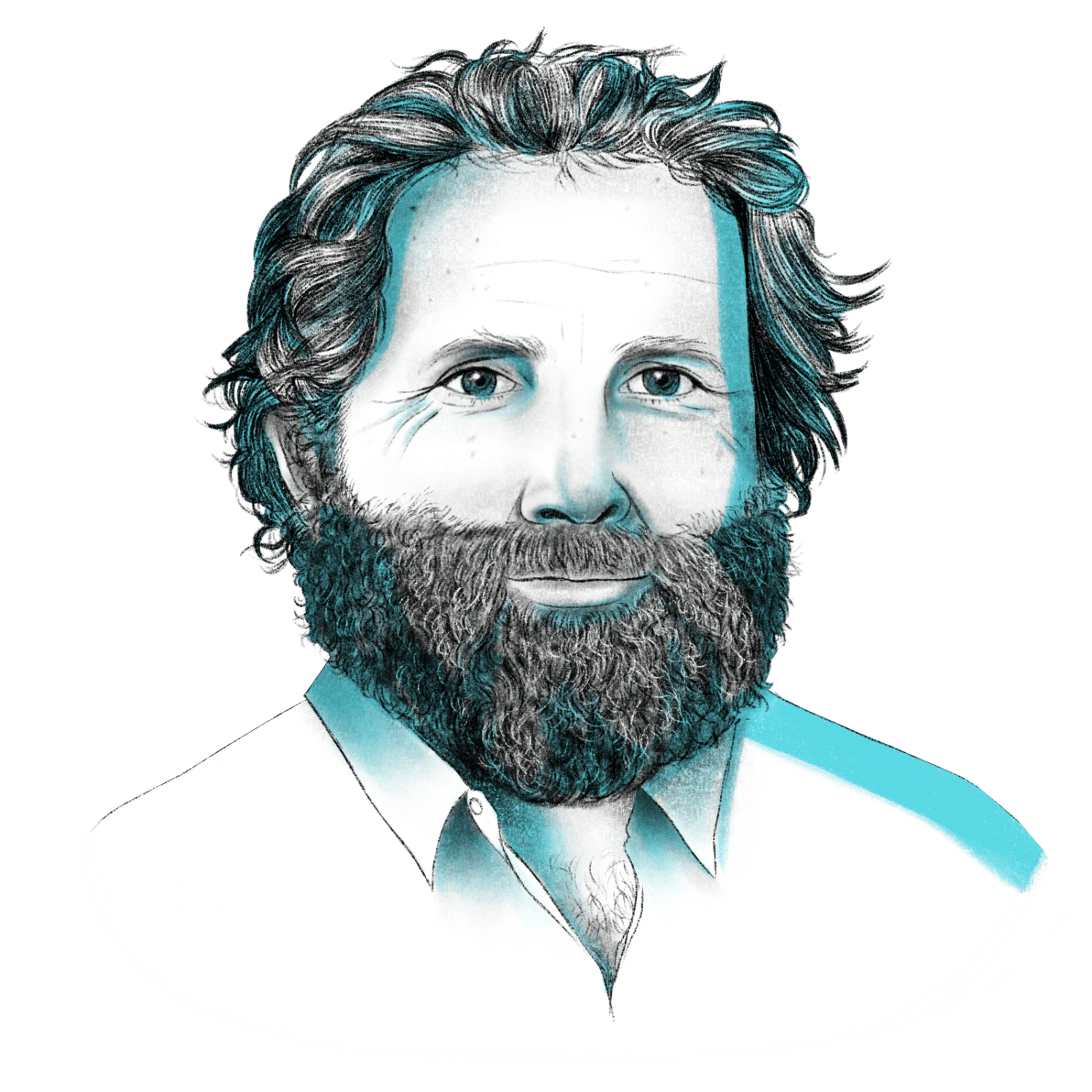As Grist unveils a new look and updated mission, we are checking in with notable figures working for a more just and sustainable future.
Saul Griffith churns out inventions: wind turbines on kites, tiny electric vehicles, and inflatable robots. For this prowess, he received a MacArthur “genius” fellowship in 2007.
Then, one day, he happened to see a chart that transformed him from an inventor into a policy wonk. It was an early version of this diagram, originally developed in 1973 for Democratic Congressman Melvin Price of Illinois, in response to his request for a chart that “in less than an hour, could give an extremely busy person an understanding of the size and complexity of our national energy dilemma.” Since then, the government has filled in more details and updated it regularly. Griffith became obsessed with this chart: It contained, he believed, every single thing that Americans would need to replace — from giant coal plants down to the smallest gas-powered grill — to meet the challenge of stopping climate change.
Last year Griffith started a policy shop called Rewiring America and has a book due out in October, Electrify: An Optimist’s Playbook for Our Clean Energy Future. Rewiring America’s first publication “Mobilizing for a Zero Carbon America,” came out last July and laid out a blueprint for decarbonizing the U.S. by 2035, creating 25 million jobs in every U.S. zip code in the process, and saving the average American household $2,000 per year in energy costs. It drew support from progressive activists, like the Sunrise Movement, as well as moderate Washington, D.C. think tanks like the Niskanen Center.
But recently, as his metamorphosis from inventor to policy wonk has come to full fruition, Griffith has begun to worry that success in reversing climate change will sacrifice the parts of nature that made him into an environmentalist in the first place.
Grist asked Griffith to explore these heavy topics. and if he sees the current moment as a departure from the environmental thinking of the past. This interview has been condensed and lightly edited for clarity.
Q: You officially became a policy wonk last year, and shortly after, the United States elected a president that’s talking the talk about a massive mobilization to decarbonize the country. If we think of this as an inflection point, what do you see?
A: It’s funny, I recently picked up a National Geographic from 1978 to show my children how the world has changed. I flipped to an article on the pros and cons of nuclear energy, with (energy policy expert and founder of the sustainability-focused Rocky Mountain Institute) Amory Lovins and a couple other people on one side describing efficiency as the answer, and then all of the technocrats for nuclear on the other side. Zero has changed in that conversation in 42 years.
We did Energy Star appliances and debated whether or not we accept the compromises of nuclear power. And the efficiencies were all great, but we outpaced it with population growth and letting our cars get fatter and safer and faster. And our homes got bigger. And efficiency was easily parodied because efficiency was your eccentric aunt or uncle wearing an overly thick woolen sweater and recycling almost obsessively.
Q: So nothing has changed. But do you see change approaching?
A: Looking forward, we now can squint and see one or two paths through to getting to zero emissions. We can do that with a prodigious amount of renewables and a prodigious number of batteries. We could do it with slightly fewer renewables and slightly fewer batteries by doing a shit-ton of nuclear. There’s no other answer.
What’s changed is that we can see the way through now. I can enumerate the one billion machines that physically exist in the American economy that need to be replaced over the next 20 years to get to zero emissions. I can count them. I can actually name them. I can tell you what stores sell them, which companies make them. There’s 22,542 power stations in the U.S. creating electricity. There are 253 million cars. There’s 8 million 18-wheelers. There’s 139 million load centers, which is the electrical box that touches the house. You need to replace the 79 million natural gas furnaces and a million heating oil furnaces and there’s 24 million natural gas clothes dryers.
You can now just go and do this substitution. And provided that we continue to push the price of batteries down, the price of solar down, then, hooray, we win.
Q: So we know what to do, then. Are we at a “whither environmentalism” point?
A: That’s probably the best description I’ve heard for us wrestling with our own hypocrisies and accepting how much we’re going to kill in order to have a compromised suburban lifestyle. It’s like, well, I guess we don’t really need the gorillas, because we like cobalt. And quietly, these environmentalists will tell you that even though they asked for bike lanes, they still keep the Volvo. They really like the idea of tiny homes, but that’s what you do for summer holiday, and the rest of the year you really need twenty-one hundred square feet.
And environmentalism has withered in the suburbs with Volvos and big houses, and honestly we like it because it’s nice. So then when you can actually design a future without runaway climate change that will fit with that, that adds up, but it certainly doesn’t solve all the environmental problems.
Q: Is the problem the Volvo owners, or does the fault lie with Volvo?
A: Once you realize that these machines are the things in your cupboards and your garage, you can’t avoid the fact that we are responsible for a big part. The lie of environmentalism was in this revenge fantasy, where it was all the fossil fuel companies’ fault. But if you look at these machines, it’s like, no: 65 percent of our fucking emissions are coming from machines that we own.
Q: Is there anything that gives you hope?
A: The hope that I cling to right now is I can imagine a point in 2024 where neo-nationalist conservative governments worldwide will actually run on climate change platforms because the economics are right. So it’s a little bit of hope because, like, actually, we’re going to probably do it.




